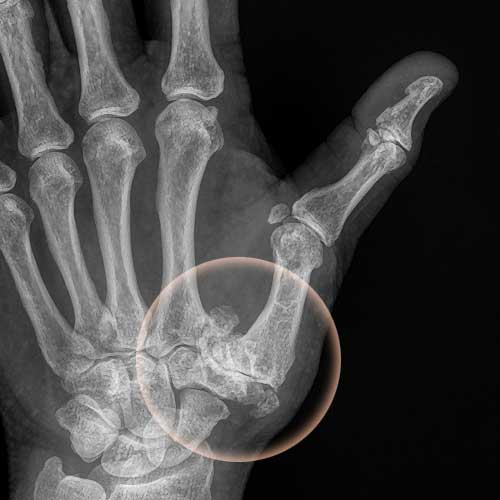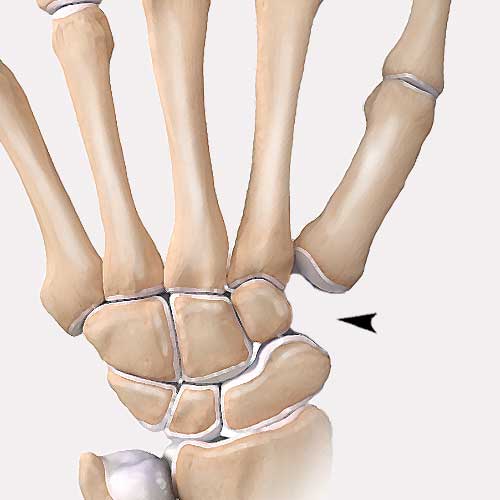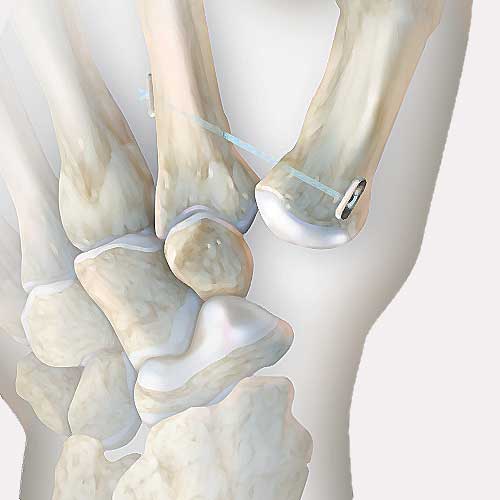
In a thumb with arthritis, the X-Ray show a thumb joint with narrowing and multiple bone spurs.
Base of thumb arthritis commonly occurs as a result of wear and tear over time. The cartilage that covers the joint surfaces gradually breaks down, leading to bone-on-bone contact and the development of arthritis symptoms. It is most often seen in patients over the age of 40 and more commonly affects women.
Base Of Thumb Arthritis Symptoms
Pain:
Persistent pain at the base of the thumb, which may worsen with activities involving gripping, pinching, or twisting motions.
Swelling:
The joint may appear swollen, tender, or warm to the touch.
Loss of strength and range of motion:
Reduced grip strength and difficulty with activities that require thumb movement, such as writing, grasping objects, or opening jars.
Thumb instability:
The joint may feel loose or unstable, causing difficulty with precision movements.
Enlarged joint:
As the condition progresses, the joint may become visibly enlarged due to bone spurs or joint deformities.
Base Of Thumb Arthritis Treatment
Treatment for base of thumb arthritis can vary depending on the severity of symptoms and your specific situation. Non-surgical treatment options may include:
Pain management:
Over-the-counter pain medications or topical creams to relieve pain and reduce inflammation.
Splinting:
Wearing a thumb splint to provide support, reduce joint movement, and alleviate symptoms.
Hand therapy:
Specific exercises to improve strength, range of motion, and joint stability.
Lifestyle modifications:
Avoiding activities that aggravate symptoms and modifying daily tasks to reduce thumb stress.
Assistive devices:
Using assistive devices such as ergonomic tools or adaptive equipment to minimise thumb strain.
Corticosteroid injections:
Injecting anti-inflammatory medication into the joint to provide temporary pain relief.
In more severe cases or when conservative measures fail to alleviate symptoms, surgery can be considered.

Thumb Arthritis
Base of thumb arthritis causes pain, stiffness and weak grip strength.

Trapeziectomy
Trapeziectomy involves removing the arthritic trapezium.

Thumb Stabilisation
Stabilisation of thumb with a suture button implant (suspensionplasty).
Base Of Thumb Arthritis Surgery
Following the surgery, a splint is applied for six weeks to protect the thumb and promote healing. Hand therapy may be recommended to regain strength, range of motion, and functional use of the hand and thumb.
Trapeziectomy can provide significant relief for individuals with severe thumb basal joint arthritis. However, as with any surgical procedure, it carries risks and potential complications, such as infection, stiffness, nerve injury, or persistent pain.
